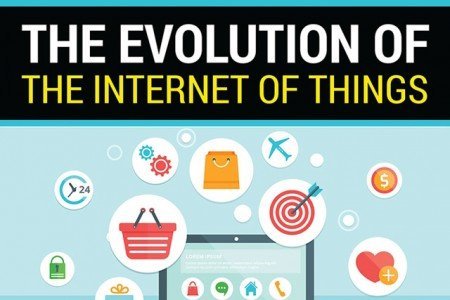The infographic by Gartner and Lucas Blake explores the evolution of IoT industry and its potential to impact almost every aspect of our lives in the near future.
Gartner Inc., an information technology research and advisory company, together with Lucas Blake that specializes in the recruitment of Sales Professionals within the Information Technology and Telecommunications sectors throughout the UK and Europe have recently released an infographic that explores the evolution of IoT and its potential to impact almost every aspect of our lives in the coming years.
The impact of the IoT on consumers’ lives and corporate business models is rapidly increasing as the cost of “instrumenting” physical things with sensors and connecting them to other things — devices, systems and people — continues to drop.
“Uses of the IoT that were previously impractical will increasingly become practical,” said W. Roy Schulte, vice president and distinguished analyst at Gartner. “The IoT is relevant in virtually every industry, although not in every application. There will be no purely ‘IoT applications.’ Rather, there will be many applications that leverage the IoT in some small or large aspect of their work. As a result, business analysts and developers of information-centric processes need to have the expertise and the tools to implement IoT aspects that play a role in their systems.”
According to the infographic, this year 5.5 million new devices will get connected every single day, with cross-industry spend estimated to total $201 billion in 2016. It is estimated that IoT will support total services spending of $235 billion in 2016, up 22% from 2015.
Gartner considers two classes of connected things. Cross-industry devices are generic devices that can be used in multiple industries, such as building management systems or connected light bulbs that can be used to save money. Vertical-specific devices are found in particular industries, such as specialized hospital equipment or container ship tracking devices.
It comes as no surprise that the rise of IoT is set to continue at a rapid rate over the next few years. In total, over 20 billion IoT units will be in action by 2020, covering health to work, and travel to entertainment.
However, the nature of IoT solutions, how they are deployed, and the types of data they generate and consume are giving rise to new security and privacy implications that organizations must begin to address. This is a rapidly escalating risk to the organization, bringing complexity unfamiliar to most IT and business leaders.
“The IoT has enormous potential to collect continuous data about our environment,” said Ted Friedman, vice president and distinguished analyst at Gartner. “The integrity of this data will be important in making personal and business decisions, from medical diagnoses to environmental protection, from commands to modify actions of machinery to identification and authorization of physical access. A black market for fake or corrupted sensor and video data will mean that data can be compromised or substituted with inaccurate or deliberately manipulated data. This scenario will spur the growth of privacy products and services, resulting in an extensive public discussion regarding the future of privacy, the means to protect individual privacy, and the role of technology and government in privacy protection.”
next